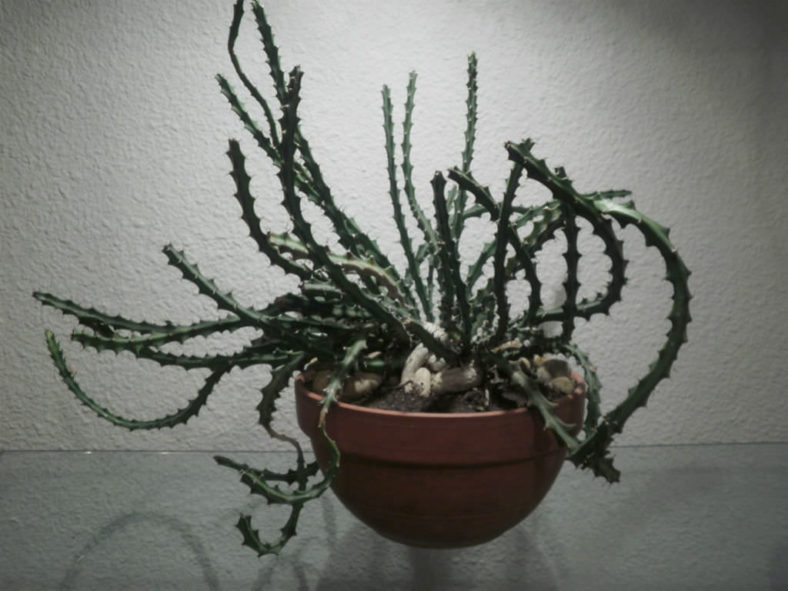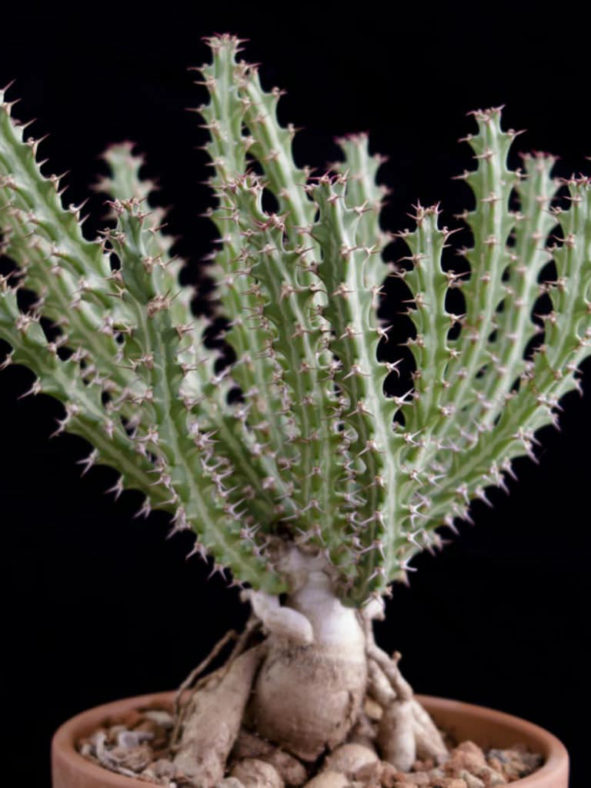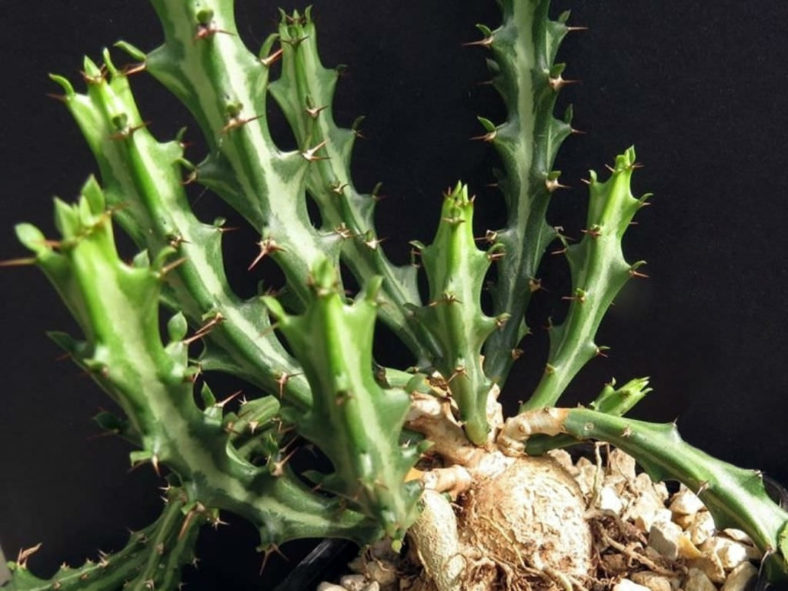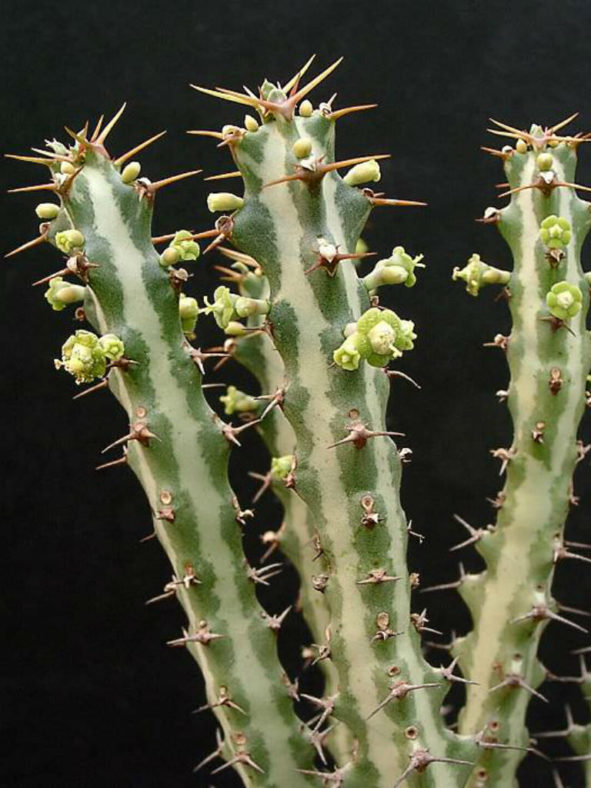Scientific Name
Euphorbia knuthii Pax
Synonym(s)
Euphorbia knuthii subsp. knuthii
Scientific Classification
Family: Euphorbiaceae
Subfamily: Euphorbioideae
Tribe: Euphorbieae
Subtribe: Euphorbiinae
Genus: Euphorbia
Etymology
The specific epithet "knuthii (pronounced KNUTH-ee-eye)" honors Paul Erich Otto Wilhelm Knuth (1854-1900), a German botanist and pollination ecologist.
Origin
Euphorbia knuthii is native to Mozambique, South Africa, and Swaziland.
Description
Euphorbia knuthii is a small succulent that forms an unusual gnarled caudex and spiny, cascading branches radiating from the caudex apex. The caudex can reach a diameter of 5 inches (12.5 cm). The branches are light green and distinctly longitudinally whitish-striped between the angles. They are 3- to 5-angled, simple or sometimes re-branched at the base, erect to spreading, and can grow up to 8 inches (20 cm) long, often much longer in cultivation, and 0.4 inches (1 cm) thick. The stems have prominent tubercles along the angles crowned by the spine shields. The spines are needle-like and can measure up to 0.4 inches (1 cm) long.
In the spring, the cyathia with green cup-shaped involucres appear between the tubercles on a short peduncle. The fruits are obtusely lobed capsules that contain brown seeds. They can grow up to 0.2 inches (0.5 cm) long and 0.3 inches (0.7 cm) in diameter.

Hardiness
USDA hardiness zones 10b to 11b: from 35 °F (+1.7 °C) to 50 °F (+10 °C).
How to Grow and Care
Euphorbias are very easy to care for. These plants require a little pampering to become established, but once they are, they are self-sufficient. In fact, more die from too much care and watering than from neglect. Euphorbias need well-draining soil and lots of sunlight. They are not particular about soil pH but cannot tolerate wet soil. Unlike most succulents, Euphorbia does not handle long periods of drought well. It may need weekly watering during the summer. Water whenever the soil is dry several inches below the surface. Water deeply, but don't let them sit in wet soil, which can cause root rot. Add some organic matter or fertilizer to the planting hole. If you are growing them in containers or your soil is poor, feed them with a half-strength fertilizer monthly.
These succulents can be grown from seed, but they can be difficult to germinate (or even find). They are usually propagated by cuttings. This can be tricky because of the exuding sap. A rooting hormone is recommended for the propagation of Euphorbia. They tend to grow problem-free, but there are a few pests and diseases to be alert for.
Learn more at How to Grow and Care for Euphorbia.
Links
- Back to genus Euphorbia
- Succupedia: Browse succulents by Scientific Name, Common Name, Genus, Family, USDA Hardiness Zone, Origin, or cacti by Genus
Photo Gallery
Click on a photo to see a larger version.


